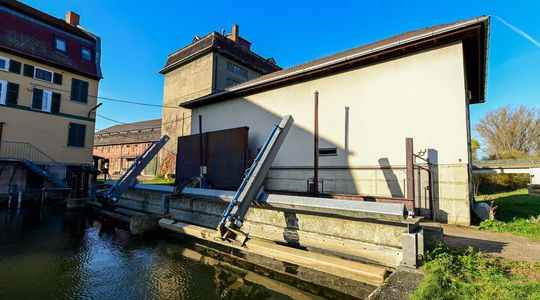The mills not only embody the subjects of idyllic postcards, flashes of an ancient world, on which water naturally mixes with human buildings and animals. They are also the subject of heated legal debates. On May 13, the Constitutional Council issued a decision confirming the exemption for certain owners of electrified mills from ensuring the circulation of sediment and migratory fish. After years of prioritizing ecological continuity, a principle that water must be able to flow without crossing thresholds to preserve biodiversity, energy stress seems to have taken over. At all costs, the production of carbon-free energy is becoming the new compass for public decisions.
Anyone who owns a water right can, in principle, renovate a mill and make their own energy. Between 600 and 800 dams are renovated each year according to the SOS Loire vivant association and around 20,000 mills could be equipped to produce electricity, according to the Fédération des moulins de France, i.e. the equivalent in installed power of half a nuclear reactor. For an individual, the installed production rarely exceeds 50 kW. Beyond covering its own needs, the interest is also to resell the surplus to EDF. A practice that raises questions for many environmental protection associations. For Roberto Epple, head of SOS Loire vivant and European Rivers network, the energy supply “is so insignificant, with a few exceptions, that it in no way justifies the damage produced on this occasion”.
According to him, the issue of migratory fish species and sediments is crucial. “We need a real debate around the question. For me, these dams are not made to produce energy but euros”. While many recognize the interest of certain facilities in a specific ecological context, Olivier Ejderyan, researcher in the environmental systems department at ETHZ, believes that “the multiplication of such facilities in an uncoordinated manner has an equally significant environmental impact, even more, than a large dam, without reaching an equivalent level of production”.
Scientific controversies
And yet. Not all scientists agree in attributing a major value to the ecological continuity of watercourses. Thus, Christian Lévêque, hydrobiologist and director of research emeritus at the Research Institute for Development, pleads for a completely different approach to mini-hydroelectric power stations. “Rivers have always been used as a main source of energy for human activities,” he recalls. For him, the old mills have, for centuries, been perfectly integrated into their ecosystems and multiple reasons intertwine to explain the decrease in migratory fish, even when the dams have been removed. An opinion shared by Michel Andreu, owner of a small power plant and member of the Federation of mills of France, for whom these installations must be seen as “an asset in biodiversity” and a guarantee of energy independence.
In the middle of this debate are the individuals wishing to undertake work. For this Tarnais who wants to remain anonymous, the steps started two years ago look like a way of the cross. Between the recognition of his right to dispose of the mill, the visits of experts and the hours spent on specialized forums to help him find his way around, the man finds it difficult not to feel discouraged: “Honestly, if I had to do it again, I don’t know if I would embark on the adventure...“, he sums up. Maître Jean-François Remy, lawyer, handles small hydroelectricity cases all over France and sees desperate customers pass by. He notes that “between the cost of the procedures and that of the equipment, it is not far from 200,000 euros and up to 5 years of procedure before commissioning.
For people connected to the networks, the return on investment is 20 to 30 years”. Some of its customers have dropped the business after investing several thousand euros and hundreds of hours of formalities. electricity can legitimately be perceived as a holy grail in these times of rising prices, individual hydraulic production must deal with a few sticks in the palms.
